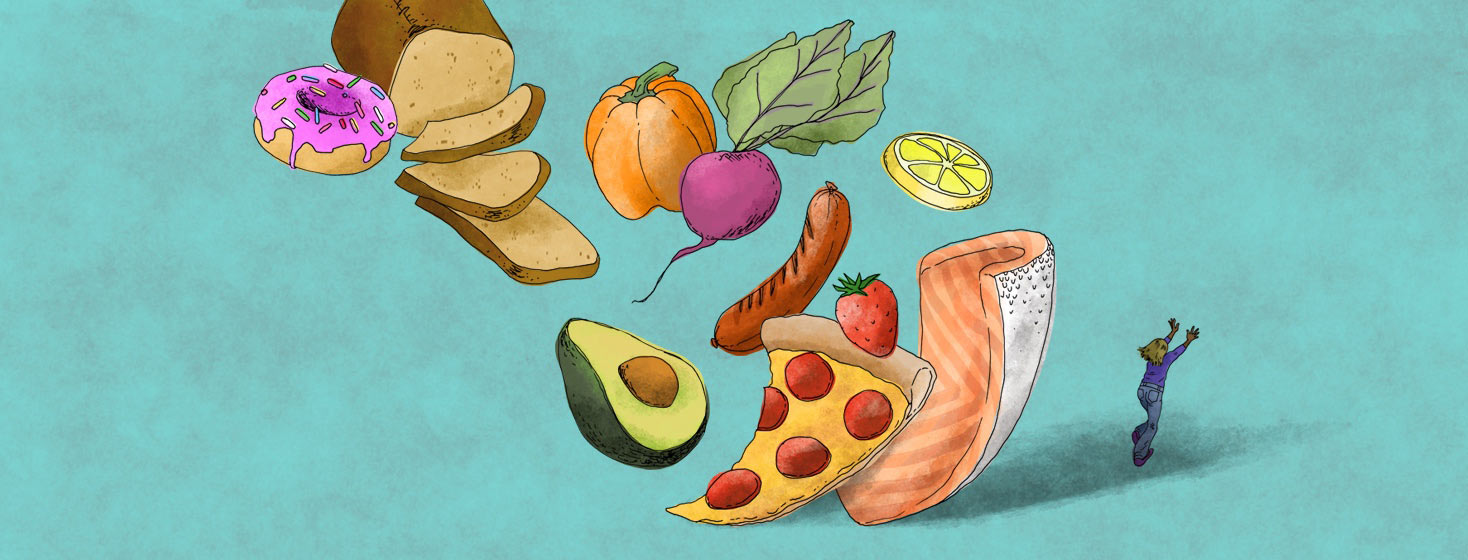My Journey with Diets and Learning to Enjoy Food Again
When I was first diagnosed with myasthenia gravis (MG), I started researching diets for autoimmune diseases. Due to my upbringing which valued holistic health, I believed my body was capable of healing. Health was not just about finding the right medication, but also supporting my body nutritionally, physically, and mentally.
Swallowing issues
I was pregnant at the time and working with a perinatologist. I was rapidly losing weight because of my swallowing issues, so he recommended I see a dietician.
The dietician suggested that I try the Mediterranean diet, which prioritizes vegetables, nuts, seeds, legumes, fruits, and fish, and a low amount of red meat.
Due to my problems swallowing, she recommended that I drink smoothies and eat soft foods packed with healthy fats, such as avocados.
Exploring different diets
In my search for nutritional advice for autoimmune diseases, I came across the Autoimmune Protocol (AIP) diet.
The AIP diet aims to reduce inflammation in the body by eliminating potentially inflammatory foods. It also emphasizes eating nutrient-dense foods to improve gut health, regulate hormones, and regulate the immune system.
I was determined to try it and started purging my pantry. I restocked it with things like coconut milk, bone broth, sweet potatoes, and organic vegetables and meats. I avoided all processed foods, sugar, grains, dairy, and more.
Drowning in life changes
In the overwhelming combination of pregnancy and a new diagnosis, I felt like I was drowning. Making major life changes like a complete overhaul of my diet while learning to manage my symptoms was too much to handle.
Four months postpartum, I managed to stick to a strict AIP diet for 3 months. I ate things like liver pâté, bone broth, cassava flour tortillas, and a lot of leafy greens.
However, with my progressing symptoms, I lost the energy to cook and prepare food for myself. I often went to bed hungry because I was too weak to eat.
Reintroducing foods
As I reintroduced foods back into my life, I started to see food as dangerous. I was hyperaware of how certain foods would make my body react. I was scared that eating the wrong thing could cause my symptoms to flare.
Due to all of the variables of my recovery, even though I reintroduced foods 1 by 1, I couldn't pinpoint my improvements or regressions to anything specific. I changed my diet, but I also was tapering down on prednisone.
I was also seeing an acupuncture doctor, and my symptoms would fluctuate after treatment. My body was also healing postpartum.
Reclaiming my joy
After I started a new treatment and was finally feeling freedom from the overwhelming symptoms of MG, I became more aware of this growing fear in my life. As someone who used to enjoy food, know all the best restaurants, and plan vacations around food, this realization was heartbreaking.
I recognized how much I let this fear steal my joy. One day a friend asked me, "Why don't you just eat food to enjoy it again?" This struck me and gave me the push to break out of my anxiety.
Finding the right diet for me
I started to eat food and savor it, grateful that I no longer had problems swallowing. I started to listen to my body instead of adhering to certain diets, becoming aware of how foods made me feel after eating them. I learned that greasy, carbohydrate-heavy foods gave me headaches. In this process, I decided for myself what foods were best for me.
I still avoid processed foods and do my best to avoid sugar and simple carbohydrates. I prioritize colorful, organic vegetables, and organic meats. I try to drink bone broth every day. The diet that generally works best for me is the paleo diet, which consists of fruits, vegetables, lean meats, fish, nuts, and seeds.
You know your body best. Use diets as a guideline, but listen to your body and trust yourself in the process. This has made life and eating much more enjoyable and rewarding.

Join the conversation